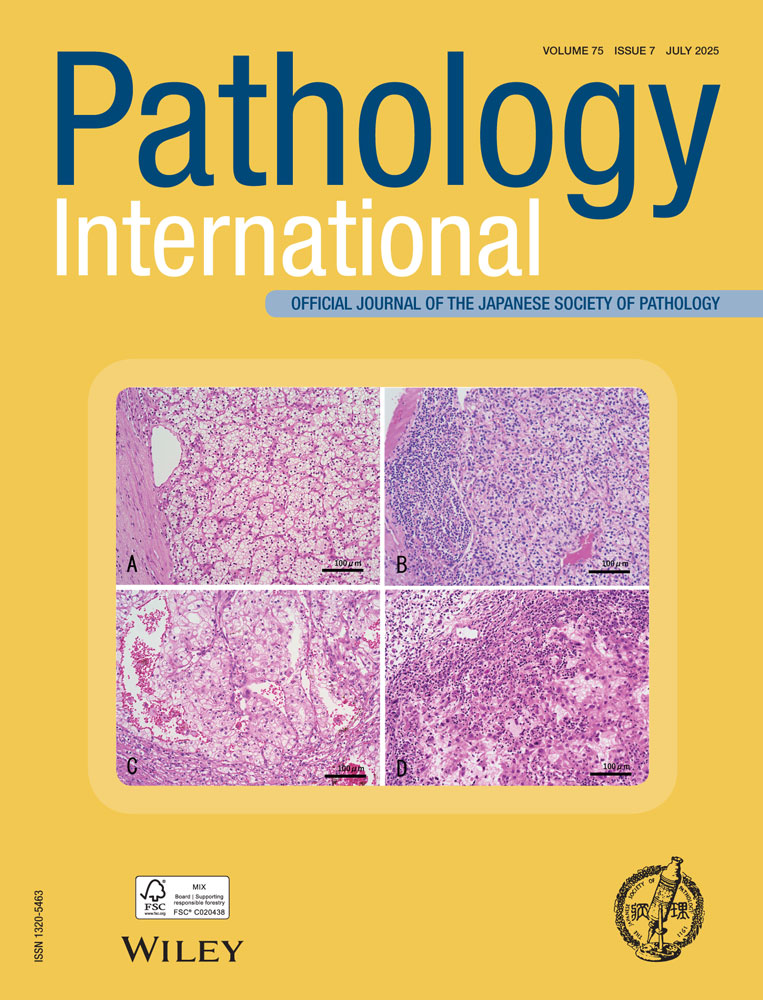Heterotopic sebaceous glands in the esophagus: Histopathological and immunohistochemical study of a resected esophagus
Abstract
A resected esophagus with numerous heterotopic sebaceous glands was examined in an attempt to determine whether esophageal heterotopic sebaceous glands are the result of a metaplastic process or a congenital anomaly. The present case concerns a 79-year-old Japanese man with numerous esophageal heterotopic sebaceous glands accompanied by superficial esophageal cancer. The resected esophagus possessed numerous heterotopic sebaceous glands, which could be seen clearly as slightly elevated, yellowish lesions. Histological examination of these glands, all of which were located in the lamina propria, revealed lobules of cells that showed characteristic sebaceous differentiation. Bulbous nests of proliferating basal cells showing sebaceous differentiation were occasionally observed in the esophageal epithelium. Of the antibodies against six different keratins used, only anti-keratin 14 labeled both the heterotopic sebaceous glands and the bulbous nests. Acquired metaplastic change of the esophageal epithelium is probably the pathogenetic mechanism involved in these unusual lesions.




